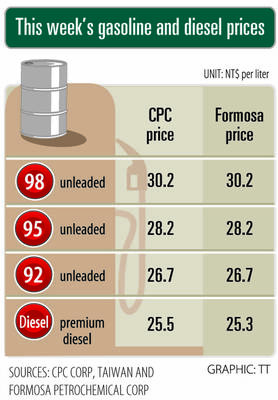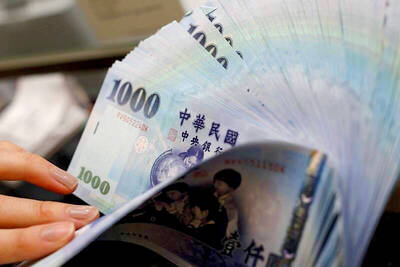Solar cell maker Neo Solar Power Corp (NSP, 新日光) yesterday said that it plans to focus on higher-margin monocrystalline products, especially passivated emitter rear contact (PERC) solar cells, and gradually exit the cutthroat polysilicon solar cell market after two years of losses.
“It is difficult to make a profit from polysilicon [solar cells] given poor average selling prices,” a company official said by telephone under the condition of anonymity.
Because of an oversupply, mainly from China, the prices of polysilicon solar products collapsed last year, the official said.
Polysilicon solar capacity accounts for more than half of Neo Solar Power’s overall solar cell capacity of 2.2 gigawatts, while monocrystalline solar cell production makes up about 40 percent, or 900 megawatts.
PERC solar cells enjoy a premium of at least US$0.05 per watt over conventional monocrystalline solar cells, allowing manufacturers to make a decent profit, market researcher TrendForce Corp (集邦科技) said.
Neo Solar — which lost NT$2.71 billion (US$88 million) in the first three quarters of last year, after losing NT$1.46 billion in 2015 — has been struggling amid a supply glut and weak demand, while its expansion into the solar power plant business has not yielded significant results yet.
“We will carry out the new strategy this year,” the official said. “We hope to see improvements [in our bottom line] in the fourth quarter of this year,” the official said.
Asked about the latest ruling by the US Department of Commerce cutting tariffs on solar products made by Taiwanese companies, Neo Solar said it is not one of the companies affected by the ruling.
The company still has to pay an import duty of 19.5 percent.
However, local peers Sino-American Silicon Products Inc (中美晶) and Motech Industries Inc (茂迪) will only have to pay tariffs of 3.5 percent and 4.2 percent respectively.
In 2014, the US government announced anti-dumping duties of 11.45 percent to 27.55 percent on imports of solar cells made in Taiwan.
The latest ruling came after US authorities relaunched an anti-dumping investigation last year as some Taiwanese companies requested.

Merida Industry Co (美利達) has seen signs of recovery in the US and European markets this year, as customers are gradually depleting their inventories, the bicycle maker told shareholders yesterday. Given robust growth in new orders at its Taiwanese factory, coupled with its subsidiaries’ improving performance, Merida said it remains confident about the bicycle market’s prospects and expects steady growth in its core business this year. CAUTION ON CHINA However, the company must handle the Chinese market with great caution, as sales of road bikes there have declined significantly, affecting its revenue and profitability, Merida said in a statement, adding that it would

i Gasoline and diesel prices at fuel stations are this week to rise NT$0.1 per liter, as tensions in the Middle East pushed crude oil prices higher last week, CPC Corp, Taiwan (台灣中油) and Formosa Petrochemical Corp (台塑石化) said yesterday. International crude oil prices last week rose for the third consecutive week due to an escalating conflict between Israel and Iran, as the market is concerned that the situation in the Middle East might affect crude oil supply, CPC and Formosa said in separate statements. Front-month Brent crude oil futures — the international oil benchmark — rose 3.75 percent to settle at US$77.01

RISING: Strong exports, and life insurance companies’ efforts to manage currency risks indicates the NT dollar would eventually pass the 29 level, an expert said The New Taiwan dollar yesterday rallied to its strongest in three years amid inflows to the nation’s stock market and broad-based weakness in the US dollar. Exporter sales of the US currency and a repatriation of funds from local asset managers also played a role, said two traders, who asked not to be identified as they were not authorized to speak publicly. State-owned banks were seen buying the greenback yesterday, but only at a moderate scale, the traders said. The local currency gained 0.77 percent, outperforming almost all of its Asian peers, to close at NT$29.165 per US dollar in Taipei trading yesterday. The

RECORD LOW: Global firms’ increased inventories, tariff disputes not yet impacting Taiwan and new graduates not yet entering the market contributed to the decrease Taiwan’s unemployment rate last month dropped to 3.3 percent, the lowest for the month in 25 years, as strong exports and resilient domestic demand boosted hiring across various sectors, the Directorate-General of Budget, Accounting and Statistics (DGBAS) said yesterday. After seasonal adjustments, the jobless rate eased to 3.34 percent, the best performance in 24 years, suggesting a stable labor market, although a mild increase is expected with the graduation season from this month through August, the statistics agency said. “Potential shocks from tariff disputes between the US and China have yet to affect Taiwan’s job market,” Census Department Deputy Director Tan Wen-ling